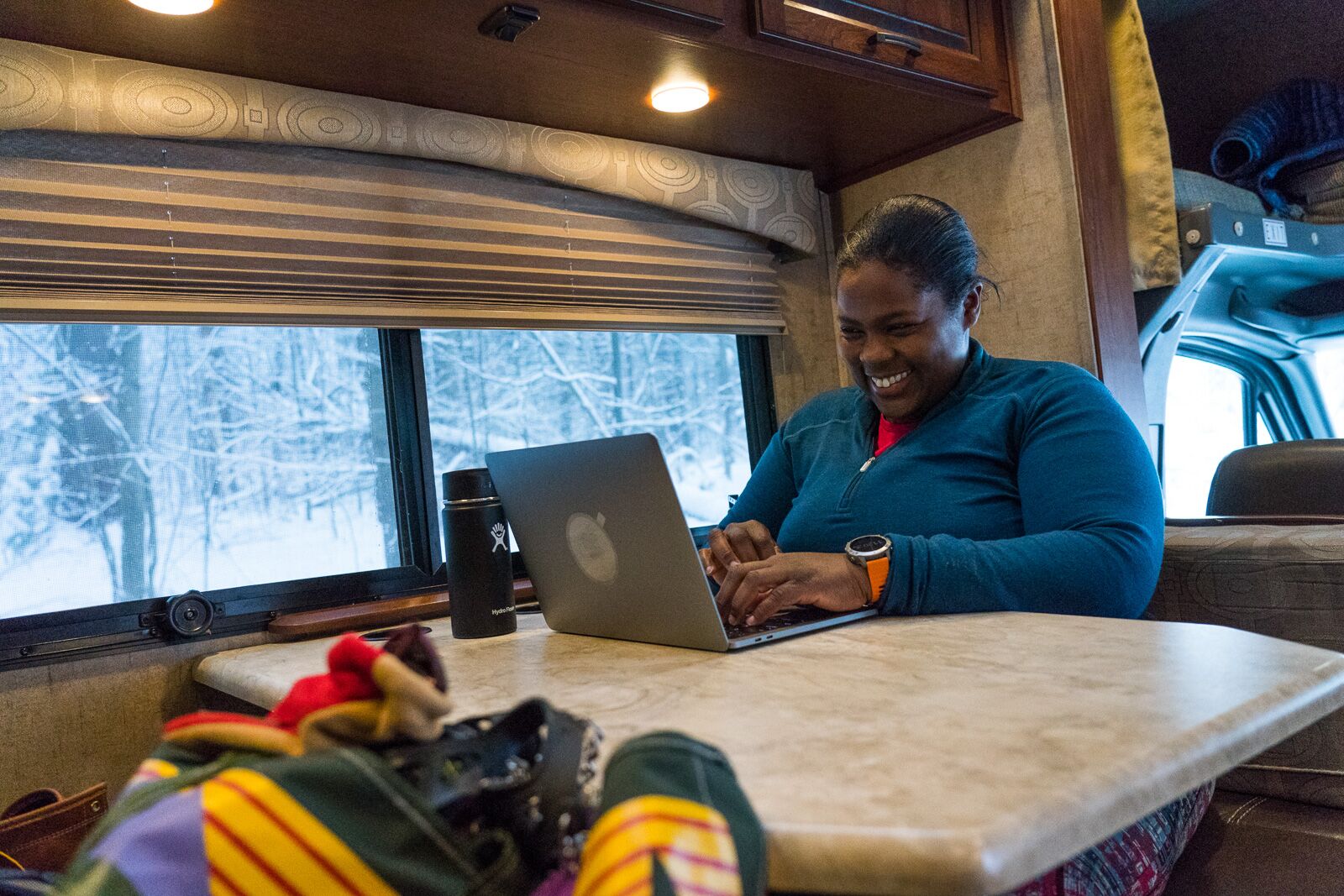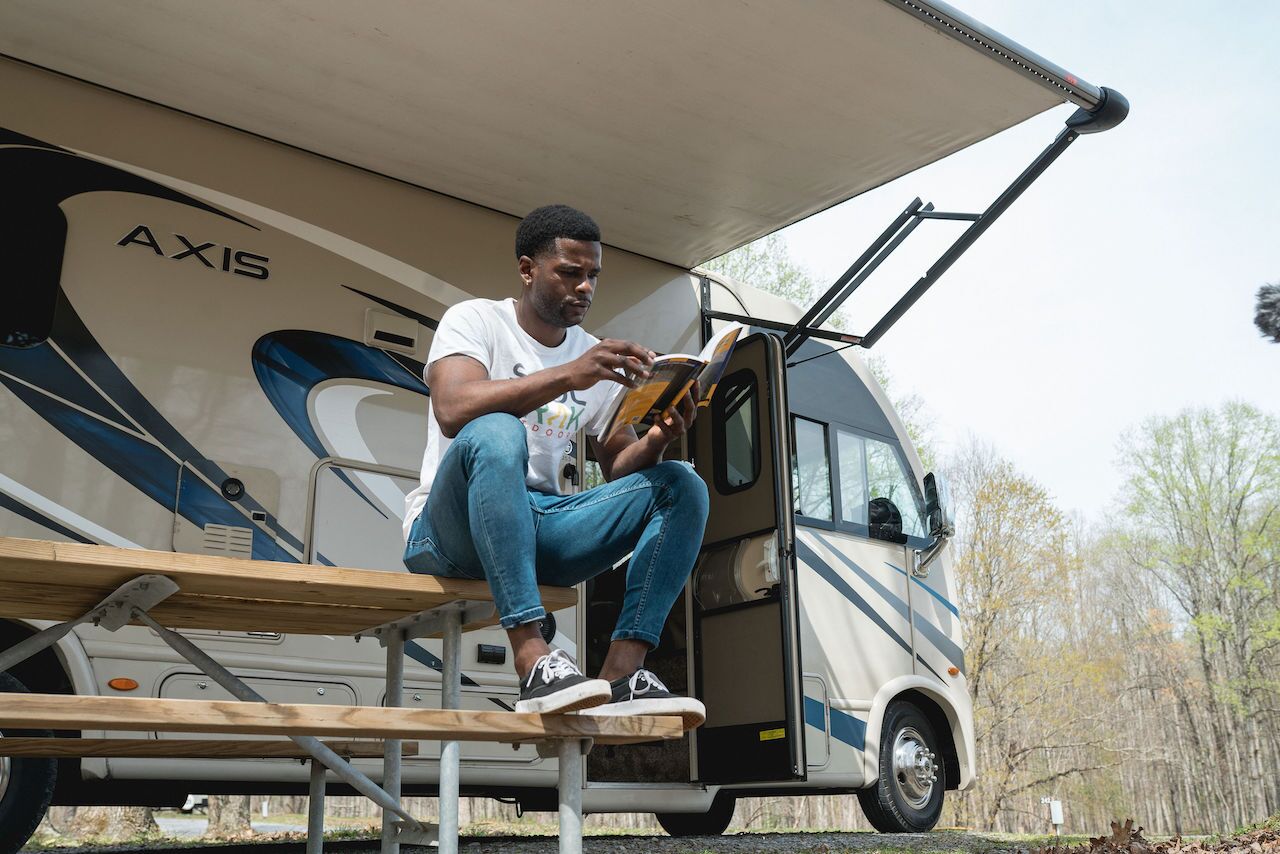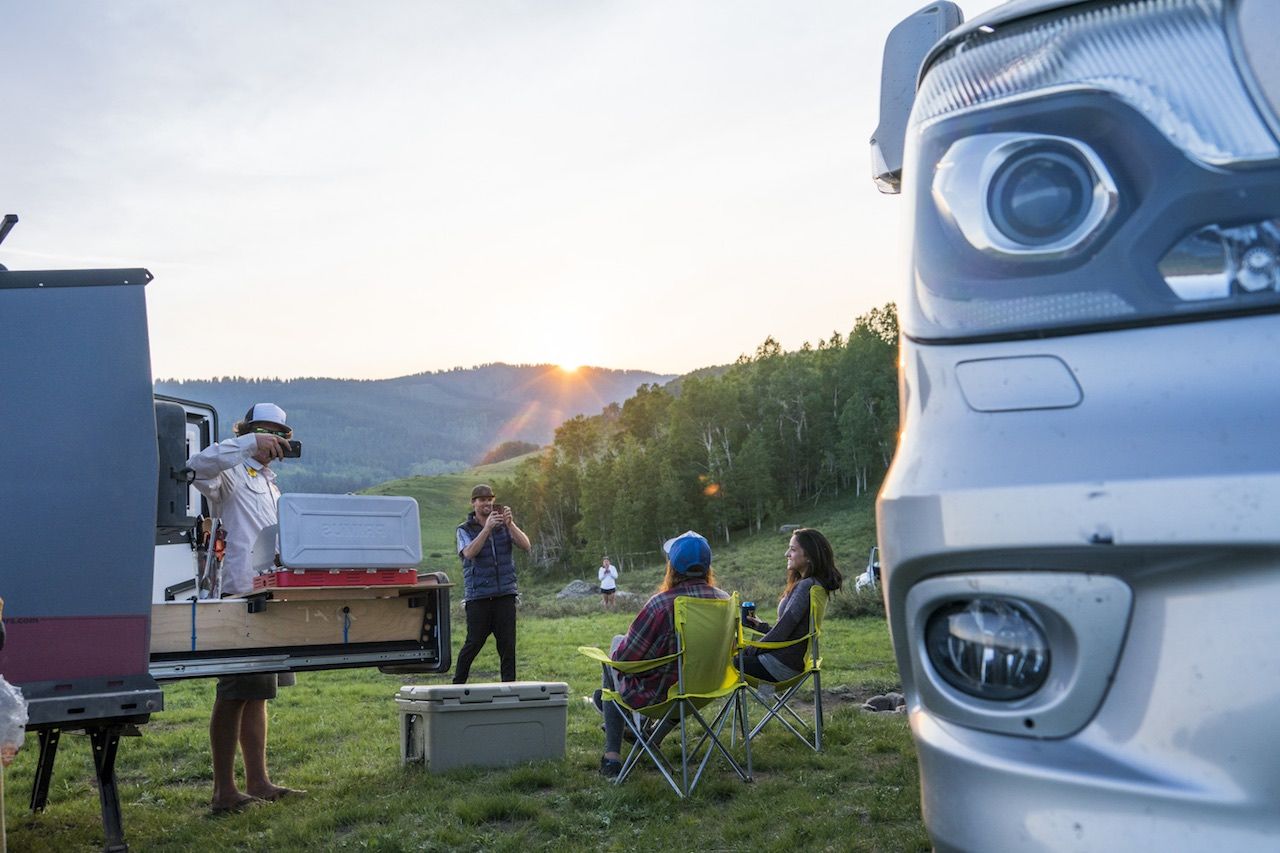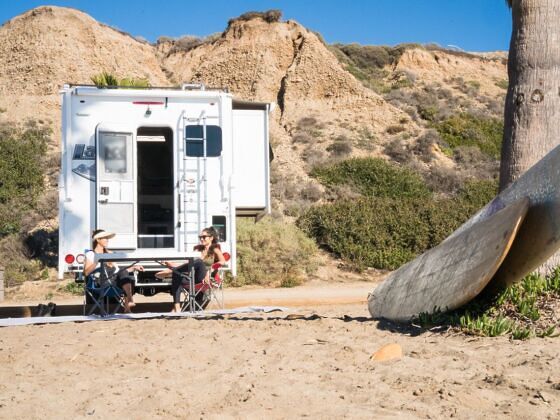The RV lifestyle, in all its expressions, is not as difficult or out of reach as some imagine it to be. And the reward — an exciting opportunity for simpler, slower travel — is more than worth it. With a little planning, some elbow grease, and a willingness to step outside of your comfort zone, you’ll be well on your way. Just don’t start out like I did.
When my husband and I began our search for an RV, we knew we wanted an Airstream. On a whim, we bought a (fairly) cheap vintage model. In hindsight, the decision was heavily influenced by the giddy impatience of beginning a new adventure. But, sometimes, when you’re just starting out, knowing the right questions to ask and arriving at clear-cut answers can be tricky.
In our case, we soon came to the conclusion that, ultimately, time mattered more than saving money. Though we had the skills to do the restoration work, we wanted to be traveling, not tackling the challenges of a fixer-upper. The trailer was sold and we found a company that specialized in newer pre-owned Airstreams. As we were getting to know the seller, he joked that this sort of thing happened frequently. Time and time again, people would wander onto his lot with some variation of the classic rookie-mistake story.
Now, when we’re on the road, we get stopped by people who say they’ve always wanted to have an RV or take a road trip in one. We’re happy to share with them the following tips, which come from our own lessons learned, and hopefully help make folks’ first experience buying and traveling with an RV that much smoother.
1. Do your homework.

Photo: Go RVing
This step is crucial, so take your time. An RV can be a big investment, so be honest about your budget, goals, and level of commitment.
Learn the differences between teardrops, camper vans, and Class A motorhomes. If you’re considering a tow-behind travel trailer, find what works best, weight-wise, for your vehicle. Whether you drive a minivan or a diesel truck, there’s a suitable option for every towing capacity.
Talk to people who own RVs and get their insight. Visit a dealership to see floor plans and layouts. Rent one for the weekend and figure out what works (or doesn’t) for you.
Ask yourself the important questions: What exactly do you want to spend your money on? How many people will be using the RV on a regular basis? Where will you store it when it’s not in use? Who will do the repairs on it?
2. Consider how you want to travel.

Photo: Go RVing
The where is always exciting, but when it comes to RVing, the how is just as important. Again, be realistic about your level of experience and expectations and you’ll save yourself a lot of time, money, and (potential) heartache.
Are you more likely to seek out campgrounds with full hook-ups or off-grid boondocking adventures? If you enjoy overlanding in rugged, remote places, you’re probably better suited to a well-equipped van vs. a 30-foot fifth wheel.
Do you require space for an “office” setup? Will you be hauling anything additional (ATVs, motorcycles, kayaks, etc.) on your trips? All of these factors need to be baked into the decision of which RV is right for you.
3. Get to know (and love) your owner’s manual.

Photo: Go RVing
Social media would have you believe the RV life is perpetually glamorous, but keeping up with the reality of black water tanks, propane, and electrical panels takes work.
Pouring over technical jargon might not sound fun, but neither is realizing you don’t know how to fix that error message on your thermostat on a hot summer day. Get acquainted with your setup and how to maintain it before an issue arises.
Determine what special supplies, cleaning solutions, or tools you’ll need to carry. Find out where to buy replacement parts. And take full advantage of the internet’s exhaustive array of how-to videos and resources. Keep your rig in the best condition possible and it’ll serve you well.
4. Pack, repack, and unpack your belongings.

Photo: Go RVing
For many, this is absolutely the hardest step. But if you’re going to live in a small space for any amount of time, you have to keep it organized and manageable. Weight has a direct impact on fuel economy, so make your contents count. More importantly, the less time spent on “stuff” means more time for exploring and adventuring.
To make things easier, work on this process in steps. After all, you won’t really know exactly what you need until you have a few trips under your belt. If you have something that you haven’t touched, used, or enjoyed for a while, take it out of rotation and leave it at home.
5. Hit the road.

Photo: Go RVing
Everyone was a newbie once, and trial and error is the best way to learn the ins and outs of the RV lifestyle. Once you bring your RV home, practice driving in different road conditions to see how it handles. Work on reversing, turning, and parking, especially in urban environments such as busy gas stations or travel plazas.
Perfect your routine for setting up (and breaking down) camp, and consider that you may have to perform those tasks in less-than-pleasant weather. If you’re traveling with another person, it helps to divide the duties (e.g., interior vs. exterior tasks) to ensure nothing gets overlooked on your checklist.
6. Find your people.

Photo: Go RVing
Entire communities are doing the same things you are, and they can be a wealth of knowledge, experience, and rewarding social connection. Go to festivals, rallies, and other events, join clubs, or find online groups with shared interests.
Once you’re on the road, the lure of the horizon and the anticipation of the next trip will take care of the rest. And, before you know it, you’ll be the seasoned pro answering questions for a novice.
